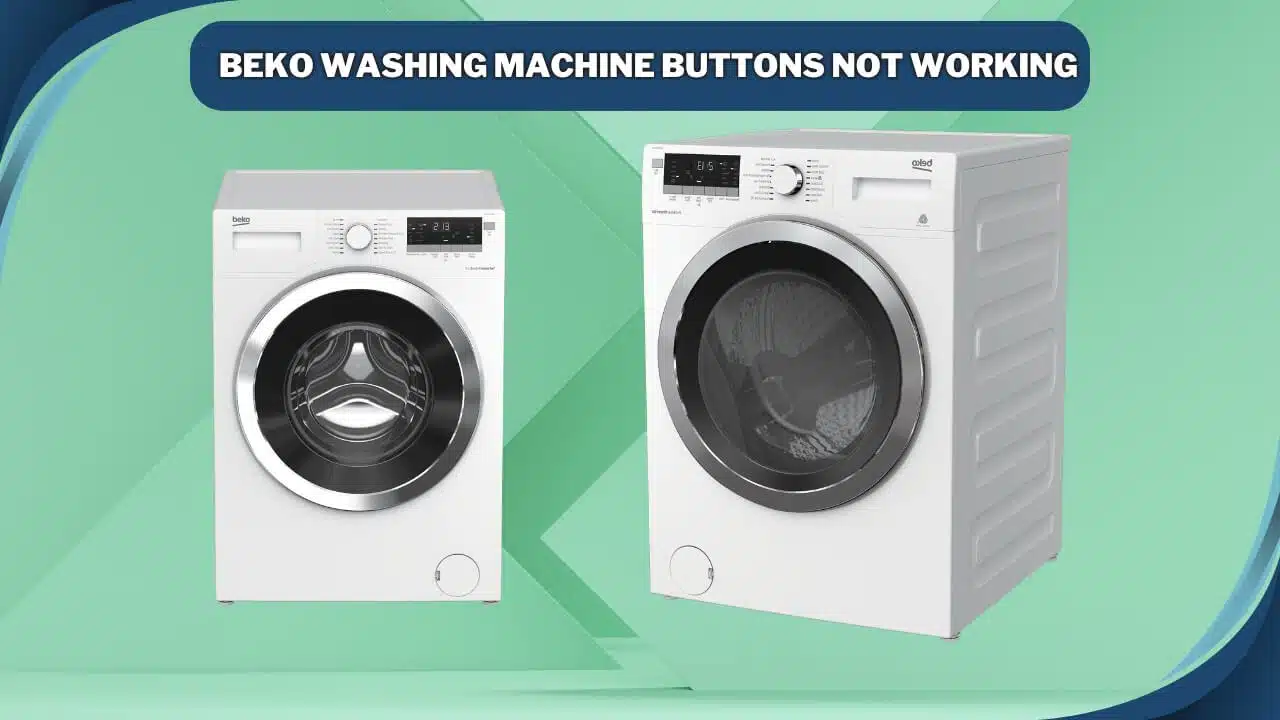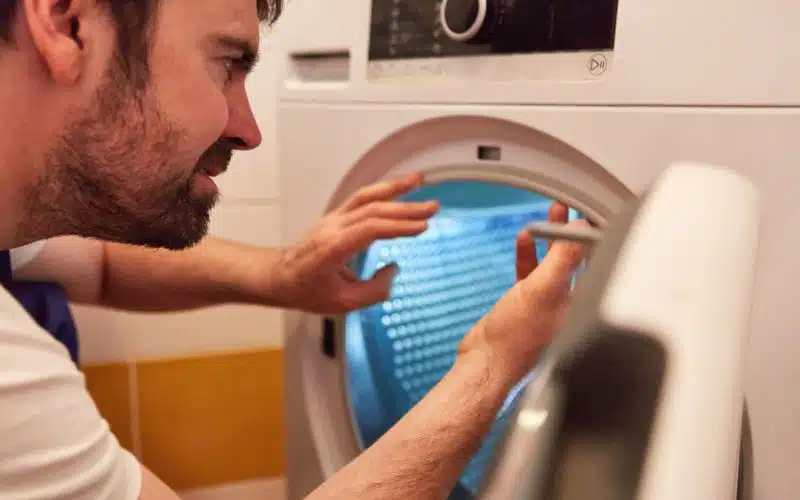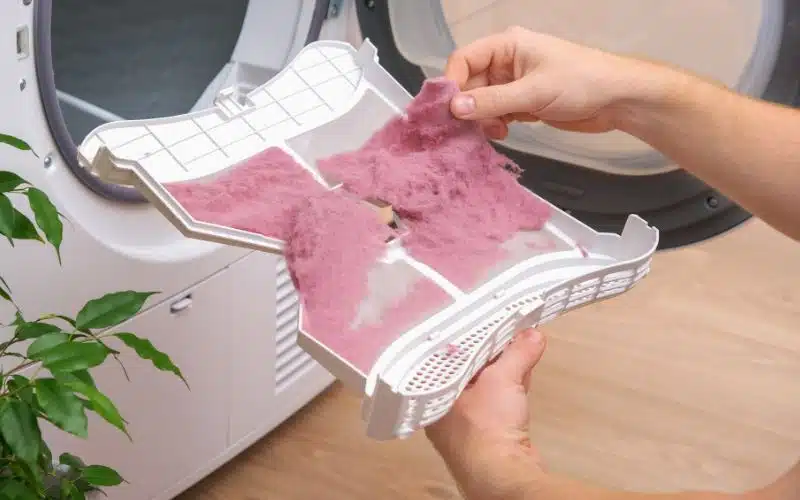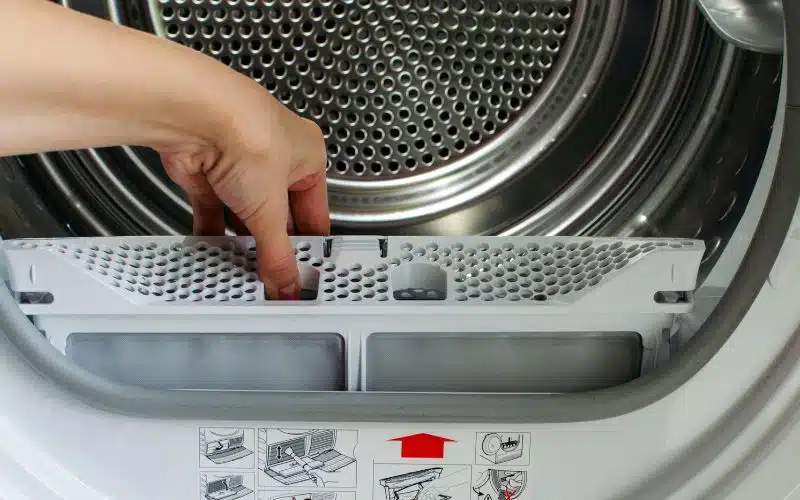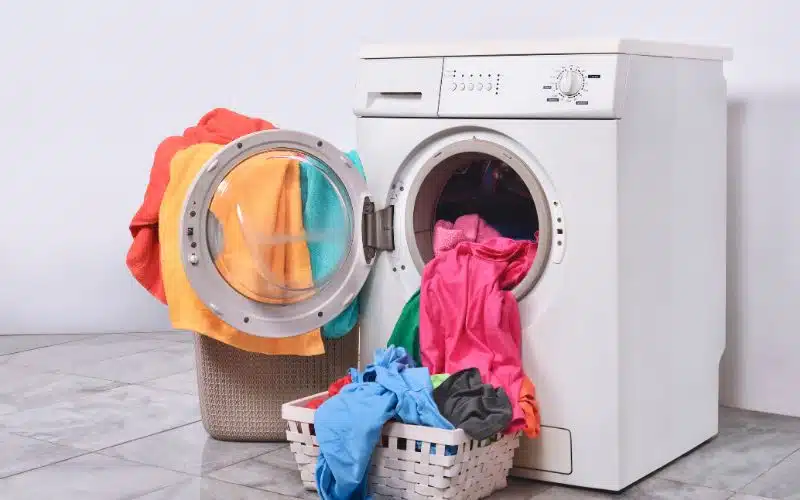Dryers are effective for removing the water in clothes after a wash cycle. However, water isn’t the only thing that comes from clothes; lint or dirt also comes off to stay inside the dryer.
Although, the dryer system collects the lint and prevents it from damaging the machine. But, the dryer components can’t be completely lint-free.
Therefore, you may wonder what happens when lint falls into the dryer. Read this article to find out.
When lint falls into the dryer, it gets caught in the filter or vent, where it accumulates over time. It then reduces the airflow and affects the machine’s performance by increasing the drying period. The accumulated lint may also cause overheating, leading to a fire outbreak. Lint is highly flammable, and a little spark could start a fire.
In this article, I’ll explain what happens when lint falls into a dryer, what to do if it happens & how to remove it. I’ll also tell you how to use a dryer lint catcher.
By the end, you’ll also understand the pros and cons of cleaning lint from a dryer.
What Happens If Lint Falls into a Dryer?

Lint falling into a dryer can get caught in the filter or vent. It accumulates over time and clogs the dryer’s lint filter resulting in reduced airflow.
The reduced airflow will diminish the dryer’s performance. When this happens, the machine will not dry clothes thoroughly or quickly, and the clothes will have more wrinkles.
In addition, the lint can find its way through the vent duct and accumulate on the screen, which clogs the outside vent over time.
The blockage in the outside vent can prevent airflow and cause severe damage. The damages can affect your clothes and dryer.
Furthermore, lint particles are very flammable and can result in a fire outbreak when exposed to the dryer’s heat.
When the dryer is running, it produces heat. This heat can make the accumulated lint in the dryer vent or filter catch fire.
It can also cause overheating, which damages the dryer or results in a fire. Therefore, fixing the situation immediately when lint falls into the dryer is essential.
What to Do if Lint Falls into a Dryer?
The best action to take if lint falls into a dryer is to find a way to remove it. There are parts of the dryer that you can clean to remove the lint.
You must ensure the dryer’s lint screen or catcher is in position, then clean it thoroughly. In addition, you need to clean your machine’s vent duct or inline dryer hose lint trap.
This trap or duct is an extra barrier to prevent lint from entering the dryer exhaust hose. Therefore, it is essential to clean its exterior and interior parts.
A vacuum cleaner is adequate to remove the lint from the vent duct or inline dryer hose lint trap. It will suck out all the lint collected there.
Also, various special brushes make cleaning the lint catcher and vent duct easier and faster. These brushes will clean these components thoroughly.
How Do I Remove Lint From the Dryer?
Removing lint from a dryer involves cleaning the essential components where the lint can accumulate, which include the lint screen and vent duct or inline dryer hose lint trap.
Although, it is more advisable to clean the lint filter before using the dryer. However, if lint falls into the dryer, you can remove it by hand or clean the filter under running water.
You need to unplug the machine and clean the interior and exhaust area to remove traces of any lint.
Here are the steps to remove lint from a dryer.
Step 1: Clean the Lint Screen
- Locate the dryer’s lint screen on either the top, side, or bottom of the dryer door.
- Apply gentle pressure to pull out the screen by its handle.
- You may either extend it fully or entirely remove it.
- Avoid bending the screen, or it may not fit back into its position.
- Next, clean off the lint on the screen with your hand or brush until you gather a small ball.
- Keep rubbing the lint ball across the screen to capture leftover lint.
- Do this until you can see through the screen; it means there is no more blockage on it.
- Trash the collected lint properly so it doesn’t cause a fire hazard.
Alternatively, you can use the method below.
- Pull out the screen totally and rub the surface with your hand.
- Then, put the screen under running water or warm water.
- You can apply soap on its surface if the lint is too much.
- Keep rinsing the screen until its surface is lint-free.
- Leave the screen on a clean surface to air dry.
In addition, you may need to clean the screen trap while the screen dries out because some extra lint particles could be in the screen trap.
To clean the screen vent:
- Get a narrow vacuum extension.
- Position the vacuum extension into the trap area.
- Next, turn on the vacuum and suck out any lint present.
- Please turn it off and remove it from the trap area.
- Return the screen to its position.
It is best to thoroughly clean the screen and trap around it so the lint won’t go further into the dryer. It would help to do this every time before using the dryer.
Step 2: Clean the Dryer Vent Duct
- Disconnect the dryer from its power source.
- Push the dryer away from the wall to access the rear part.
- Locate the exhaust hose and lose the two clamps on either side, attaching it to the dryer.
- Then, pull the hose away from the machine and wall port.
- Look inside the exhaust hose to see if there are lint balls present. You may need to use a flashlight for a brighter and better view.
- Next, use a cleaning brush to clean the hose’s interior gently.
- Alternatively, you can use a vacuum extension to suck out the lint inside the hose.
- Set the cleaned extension hose aside.
- Next, get a vent cleaning rod or kit and run it into the wall vent.
- Keep pushing in the brush and rotating it to better access the vent’s insides.
- Remove the cleaning brush to clean off any lint accumulated on it.
- Reinsert the brush and start the cleaning process again.
- Repeat this process multiple times until the vent is completely clean.
- Next, reattach the exhaust hose to its position.
- Tighten the clamps to hold them in place.
- Then, plug in the dryer to check if hot air is escaping from the vent sides.
- Clamp the vent properly if there is hot air escaping.
- Push the dryer to its normal position against the wall.
- Up to 30 feet. Includes one high quality synthetic...
- Easy to use with Simple Instructions: dryer vent...
- Improve Dryer Working Efficiency: Improving cloth...
- Save Your Money:No need to pay a professional...
- COMPREHENSIVE 11-PIECE DRYER VENT CLEANER KIT:...
- EASY TO USE & EFFORTLESS FOR GOOD CLEANING: dryer...
- IMPROVE DRYER WORK EFFICIENCY: A drill attachment...
- 30FEET DRYER VENT CLEANER: No need to pay a...
Last update on 2023-12-26 / Affiliate links / Images from Amazon Product Advertising API
Please note that if your dryer connection is old and connected to gas, it is best to contact an appliance professional to clean it.
Moving the dryer around yourself is unrealistic because it could cause a gas leak. Also, it would be best if you cleaned the exterior vent.
To clean the exterior vent:
- Locate the dryer vent outside the building.
- The vent should be a square-shaped exit point with a metal or plastic screen cover.
- Remove the screen cover and set it aside.
- Put your hand inside the vent to collect any lint within your reach.
- Then, position a small vacuum to suck out any lint your hand couldn’t reach. You can use a long cleaning brush too.
- Return the screen cover and secure it properly to prevent pests from entering it.
How Do I Use the Dryer Lint Catcher?
As the name implies, you use a dryer lint catcher to collect lint from clothes during drying. You can also refer to it as a lint filter or lint trap.
The lint catcher is quite effective in preventing lint buildup inside your dryer. You only have to put it inside the dryer before the dry cycle begins.
After the dry cycle, you will notice some lint on the lint catcher because particles like hair, wool, and lint will get stuck on the lint catcher.
In addition, the lint catcher works as a lint filter for the dryer’s exhaust hose. It prevents lint from quickly clogging the exhaust hose.
This method also protects the dryer vent from getting blocked with lint.
Although, the lint catcher is a very effective method to reduce the amount of lint inside your dryer. But it would be best if you cleaned it after every dry cycle.
There are disadvantages to leaving the lint catcher dirty and using it for another cycle. The result could be disastrous, so it is better to prevent it.
The table below outlines the pros of a clean lint catcher and the cons of a dirty one.
| Pros | Cons |
|---|---|
| It reduces the risk of a fire outbreak. | It causes overheating and fire. |
| It prolongs the machine’s lifespan. | It causes lint to clog the dryer vents. |
| It helps the dryer function efficiently. | The dryer’s performance reduces. |
| The dryer’s efficiency reduces energy costs. | Clothes take longer to dry. |
| It prevents mold growth inside the dryer. | The machine consumes more energy. |
FAQs
How Do I Reduce the Lint in My Dryer?
To reduce the lint, you can put a dryer sheet into the lint before every cycle. But, each sheet is only effective for one cycle.


